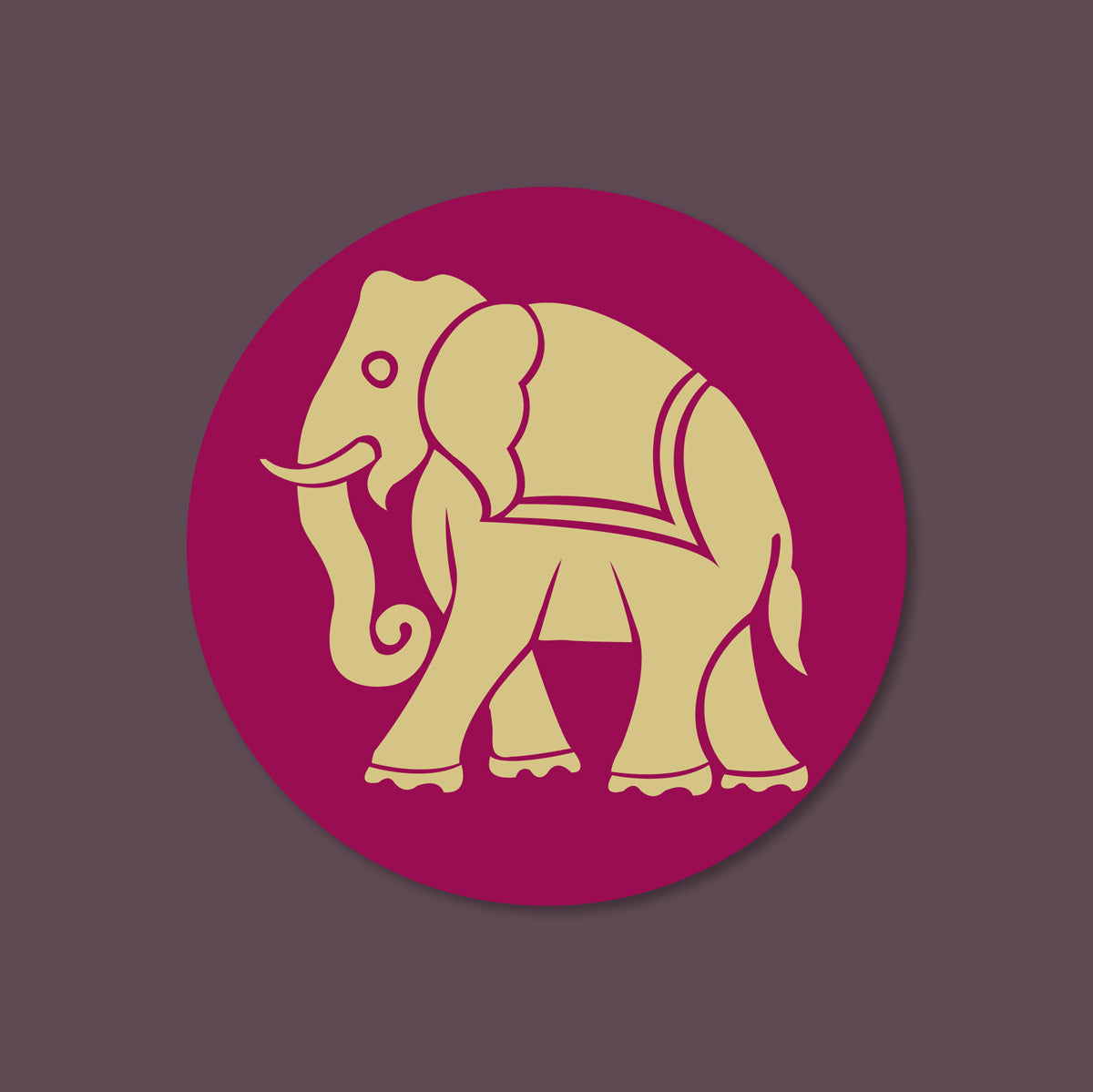
Of Elephant Tales, Told in Silk

At times the elephants are in an uninterrupted army marching in harmony; at other times, as if spread all over, each in quiet thought and sometimes dignifying a narrative with poise and majesty. The elephant called Yanai, Gaja, Hathi, and Āne, among other names, is one of the most common motifs on Indian textiles. Perhaps because of the special place that this graceful creature holds in Indian mythology and history.
(http://devdutt.com/articles/indian-mythology/elephant-lore.html)
A queen once dreamt about an elephant entering her womb, and the next day she gave birth to a child who later became the Buddha. The king of gods and the god of the sky, Indra, ride on an elephant, and in Puri, Lord Jagannath is adorned with a mask of an elephant in the hope of rain. There are just a few of the numerous places that the mighty elephant holds in Indian mythology.
The references of elephants in Indian history make it a royal animal. In the Mauryan times, only kings were allowed to own elephants – a sign of power and wealth. The elephants are said to have terrorized Alexander’s army when he reached the borders of India. A symbol of wisdom, fertility, prosperity, strength and royalty, the grace of an elephants walk is described as one of the types of women by Vatsayana – Gaja Gamini – an analogy used to describe the seductive walk of a woman.
The elephant motif on Indian textiles
A number of legendary stories and cultural and environmental references form the designs and patterns of the different textiles from the different states of India. The motifs and designs generally have seen - symbols of birds, floral design, animals, ornamental designs conch, elephants, horses, peacocks, parrots, fish, hunting scenes, scenes from the epics, are mostly to be seen the cultural and aesthetic context of the particular state that the art form belongs to.

Elegantly woven as warp and weft with gold and silver threads in Banarasi brocades, the motifs in these sarees reflect ancient Mughal influences. The elephant was a recurring figure in Mughal paintings – in wars, fights, and entertainment and simply as a vehicle for transport for the Royals.
Chikankari is another art that is greatly influenced by Mughal art and features the elephant motif. A form of embroidery that involves 40 different forms of stitches, this art came to India from Persia with Noor Jahan. It is now an art form that the artisans in Lucknow have been developing and practicing for years.
Textiles of the south
In the south of India, numerous weaves make the elephant a part of the sarees. The most popular sarees from the south are Kanjeevaram, Konrad, Mysore silk, and Pochampally, Chettinad and Gadwal.

The Gadwal sarees handwoven in Gadwal district in Telangana, feature a cotton field, which is woven separately and later interlocked with pure silk borders and pallu. Among the popular motifs of peacock, rudraksh, temple, and buttis, the elephant motif is often featured on Gadwal sarees interspersed with geometric and stripes.
The Pochampally Ikat sarees woven in Pochampalli, Puttapaka and Chautuppal villages in Andhra Pradesh, are created with sections of weft and warp yarns tied first and then resist dyed to achieve the pre-fixed design patterns and then interlaced to get the wonderful sarees. Modern Pochampally sarees are influenced by the Patola sarees of Gujarat. One characteristic motif of the patola is the elephant, seen on pochampallis, too.
Konrad sarees from Tamil Nadu are popular as temple sarees. Wide bordered, the konrad features motifs such as elephants and peacock. Chettinad sarees come from a small town of the same name in Tamil Nadu and the weavers create traditional designs in contemporary colors. Nayanpet and Bavanjipet are traditional sarees from Kerala, which typically have a golden border on a cream base that is adorned with elephants among other designs. Traditionally these sarees are available in earth shades of browns, greys, and off-whites.

And then there are the Kanjeevaram sarees. Gold dipped silver threads are intricately woven on silk. As one thread gets interwoven with the other, delicate and decorative patterns emerge. Kanjeevaram sarees are woven in the temple city of Kanchipuram and a number of the inspirations for the designs on the sarees are drawn from the temple architectural and sculptural details. The motifs are traditionally woven on to the body as bhuttas or intertwined among the creeper on to the borders. The elephant is a recurring figure in the temple sculptures as well as on kanjeevaram sarees. Elephants are part of Kanchipuram’s treasures of legacies and stories and have been an inspiration to weavers for centuries. The walls and stupas have had a beautiful mix of Shiva and Hari epic scenes and motifs.
The crafting of motifs
The process of making a motif is as interesting as the final outcome of the process is. Whereas traditionally, the motifs were drawn by hand, with the coming of computers, the designs started being created digitally, too. In the traditional method, a designer draws the design directly or traces it with the help of a tracing paper. Once the motifs are drawn, the next process would be repeated setting. In this process, the borders and pallu designs are set with proper repeat size using the developed motifs. Motifs and other geometrical patterns are arranged according to the trends, colors, materials and handloom capacity.
Once the sample colors and designs are approved, the designers convert each motif/pattern adjusted with the different hooks capacity of the loom into graph form manually. And then begins the process of punching.
The design is then punched and the punch card prepared. In this process, once the cards are punched from the machine and it is arranged in a tray with proper numbering and then shifted to the lacing machine. Lacing is the process of tying the cards with one another in sequence as per the design by using nylon or thick cotton thread. The punch card or the design pattern is then given to the weavers for the saree to be woven. The whole process takes around 5 hours and it is very complex and tedious.

The process of making a motif: (http://www.eduved.org/apr15/P0346.pdf)
The leaders, the gentle giants, the playful rogues and the reliable plodders – scientists and psychologists have studied the magnificent personalities of the humongous elephants only to find a nature so versatile and dynamic.
At Sarangi, we house a range of collections with the elephant motif. Check them out here.
